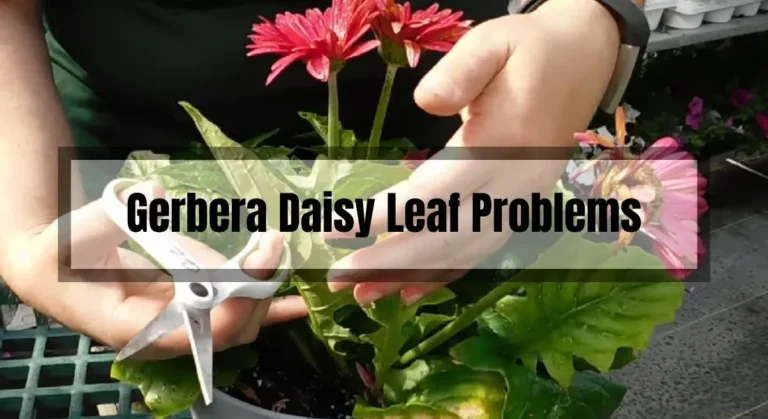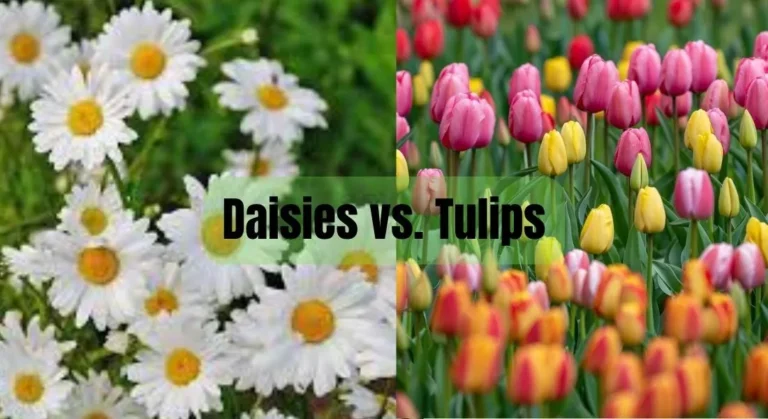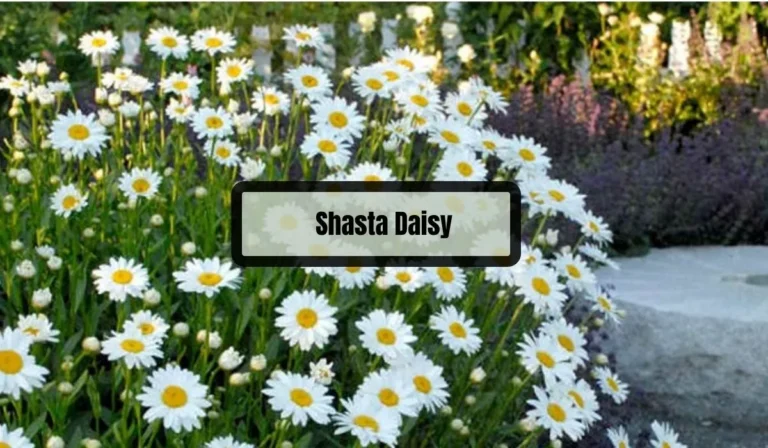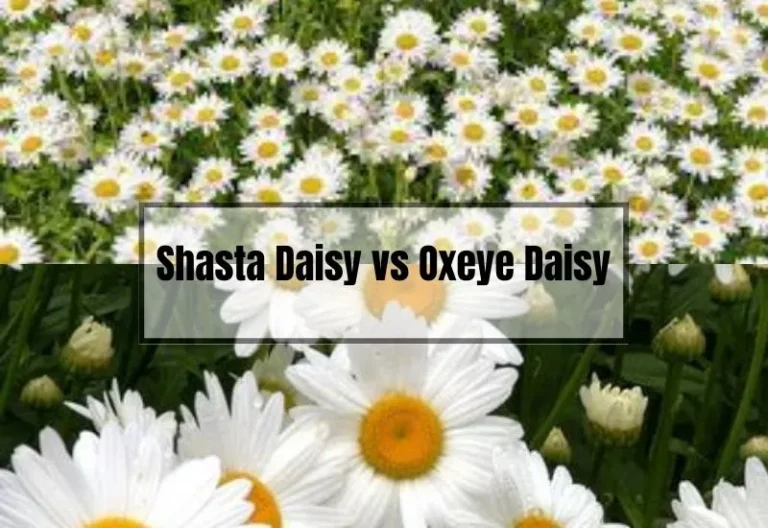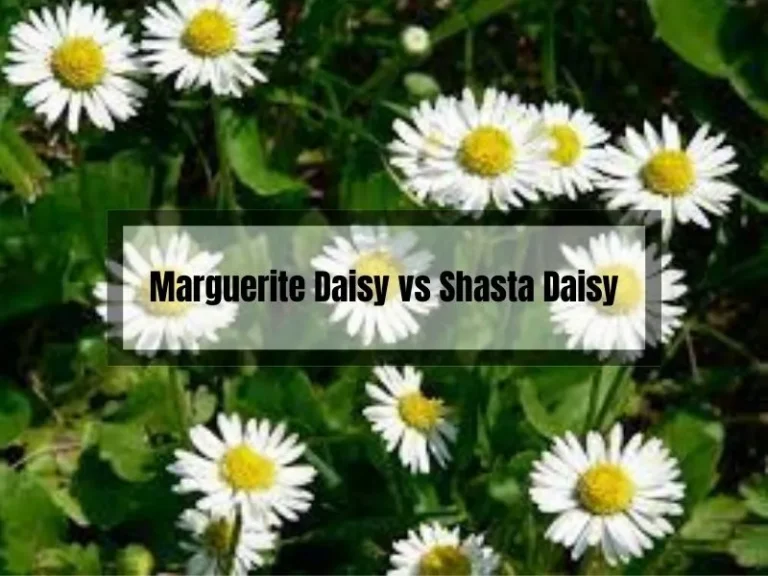Shasta Daisy vs Montauk Daisy: Which One Should You Choose?
Are you looking to add some daisies to your garden but not sure which one to choose? Shasta daisy and Montauk daisy are two popular options that you might want to consider. Both daisies are hardy and easy to care for, making them great for beginners and experienced gardeners alike.
Shasta daisy, also known as Leucanthemum x superbum, is a hybrid between oxeye daisy and English field daisy. It is a perennial that blooms from early summer to fall, producing large, white, daisy-like flowers with yellow centers. Montauk daisy, on the other hand, is a species of Nipponanthemum nipponicum that originates from Japan. It blooms later in the season, from late summer to fall, and produces smaller, white, daisy-like flowers with yellow centers.
To help you decide which daisy is right for your garden, let’s take a closer look at each one and compare their features. Understanding the differences between Shasta daisy and Montauk daisy can help you make an informed decision and ensure that you choose the best option for your needs.
Shasta Daisy Vs Montauk Daisy
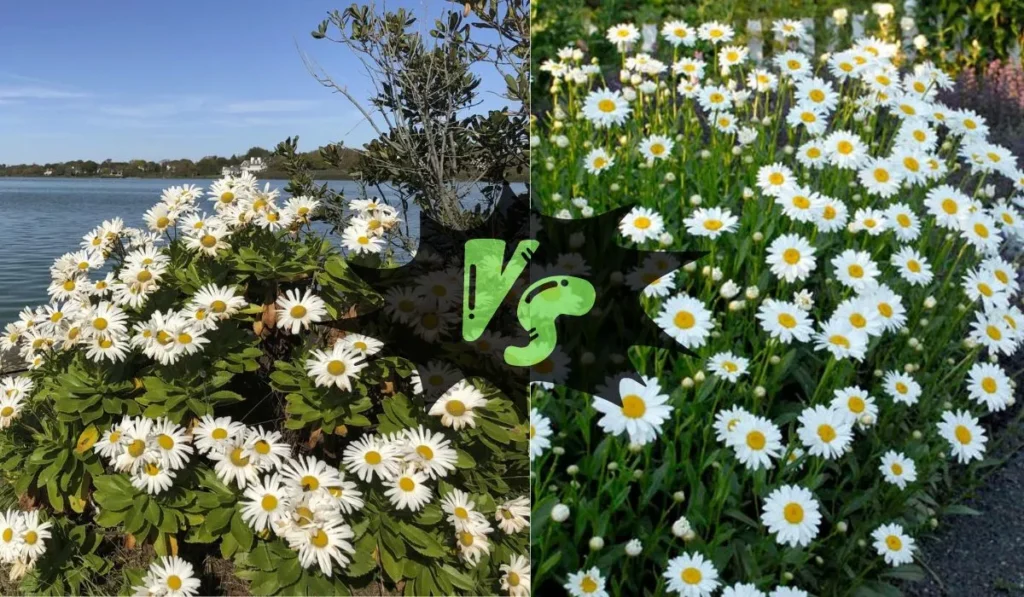
Are you looking for a beautiful addition to your garden that will bloom all season long? Then you might want to consider planting daisies! Specifically, Shasta daisies and Montauk daisies are two popular options that are sure to brighten up any outdoor space.
Appearance
Shasta daisies are a classic choice with their bright yellow centers and long, white petals extending from that center. The cultivar ‘Becky’ offers larger blossoms than the species. They blossom from summer through fall.
Montauk daisies, on the other hand, look similar to Shasta daisies, but they are larger and have a more relaxed appearance. They have petals that are wider and more spaced out than Shasta daisies, giving them a more open look. They bloom in late summer and persist until frost.
Growing Conditions
Shasta daisies are hardy and can grow in a variety of conditions, but they prefer well-drained soil and full sun. Montauk daisies, on the other hand, prefer moist, well-drained soil and full sun. They are also more tolerant of drought and salty coastal conditions than Shasta daisies.
Maintenance
Both Shasta daisies and Montauk daisies are low maintenance plants. They do not require much watering or fertilizing, and they are generally pest and disease resistant.
However, Shasta daisies may require staking to keep them upright, especially if they are growing in a windy area. Montauk daisies may need to be pruned in the spring to keep them from getting too leggy.
Uses
Shasta daisies and Montauk daisies are both great options for adding color to your garden. They can be used in borders, as ground cover, or in containers. Shasta daisies are also a popular choice for cut flowers because they have a long vase life.
Understanding Shasta Daisy
If you’re looking for a beautiful and easy-to-grow perennial that will brighten up your garden, Shasta daisy is a great choice. Here’s what you need to know about this popular flower.
Origin and History
Shasta daisy (Leucanthemum x superbum) is a hybrid plant that was first developed in the late 19th century by a horticulturist named Luther Burbank. He crossed several species of daisies, including oxeye daisy and English field daisy, to create a new variety that would have larger, more robust blooms and be more adaptable to different growing conditions.
The name “Shasta” comes from the mountain range in California, where Burbank did much of his breeding work. Today, Shasta daisy is widely grown in gardens and landscapes all over the world.
Characteristics
Shasta daisy is a herbaceous perennial that typically grows 2-3 feet tall and 1-2 feet wide. It has dark green, lance-shaped leaves and large, daisy-like flowers with white petals and yellow centers. The flowers can be up to 4 inches across and bloom in late spring or early summer.
One of the great things about Shasta daisy is that it’s a very long-lived plant. With proper care, it can live for 5-10 years or more. It’s also a great cut flower, so you can bring some of that bright, cheerful beauty indoors.
Growing Conditions
Shasta daisy is a very adaptable plant that can grow in a wide range of conditions. It prefers full sun, but can tolerate some light shade. It also likes well-drained soil that’s rich in organic matter.
To grow Shasta daisy, start by selecting a planting site that gets at least 6 hours of direct sunlight per day. You can plant it in the spring or fall, but fall is generally the best time because the cooler temperatures and increased rainfall help the plant establish its roots.
Care and Maintenance
Once your Shasta daisy is established, it’s a very low-maintenance plant. Here are some tips for keeping it healthy and happy:
- Water regularly, especially during dry spells.
- Fertilize in the spring with a balanced, slow-release fertilizer.
- Deadhead spent flowers to encourage more blooms.
- Divide the plant every 2-3 years to prevent overcrowding and maintain vigor.
With a little bit of care, your Shasta daisy will reward you with beautiful blooms year after year.
Understanding Montauk Daisy
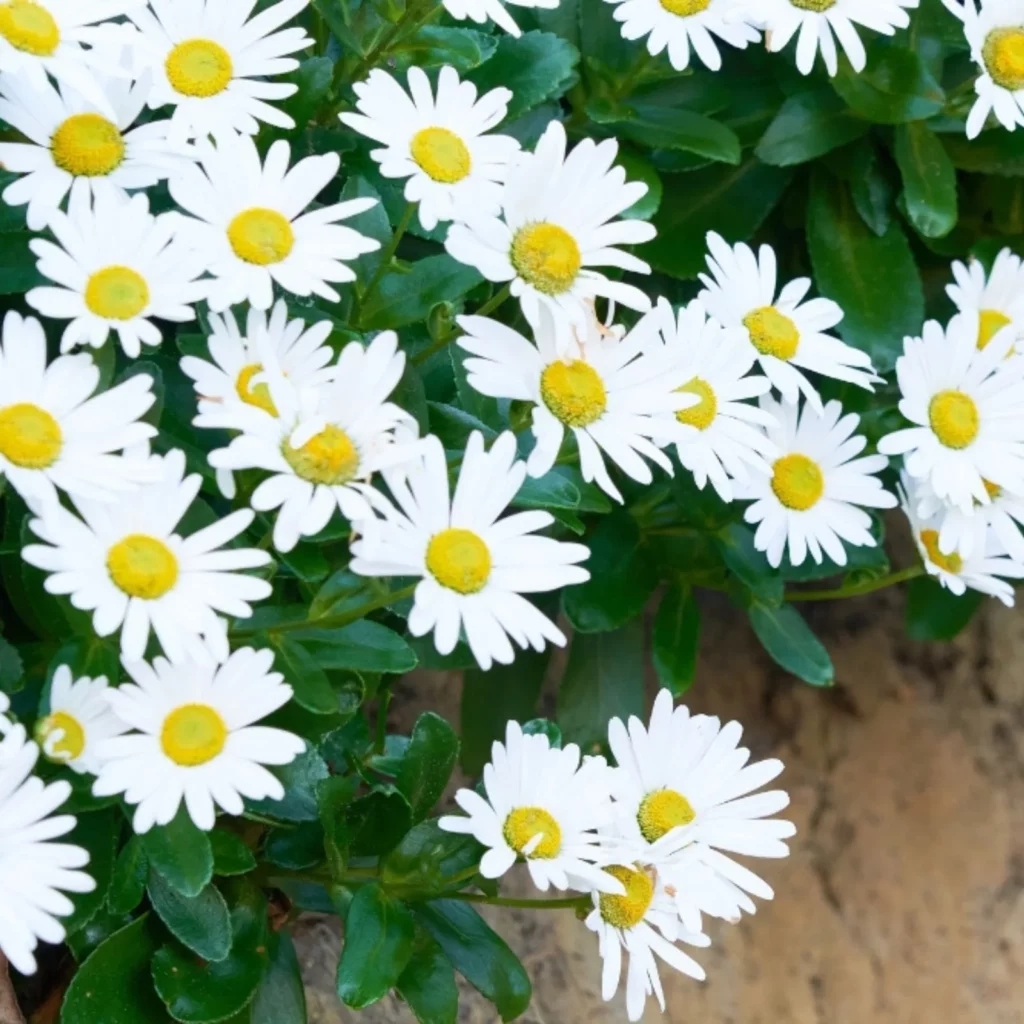
If you’re looking for a beautiful and easy-to-grow flowering plant, the Montauk Daisy is a great choice.
This plant is a member of the aster family and is native to Japan. It’s also known as the Nippon Daisy or the Montauk White Daisy. Here’s everything you need to know about this lovely plant.
Origin and History
The Montauk Daisy was first introduced to the United States in the early 1900s. It was originally grown in the Montauk area of Long Island, New York, which is where it gets its name. The plant was brought to the US by a Japanese horticulturist, but it’s not clear exactly when or how it arrived.
Characteristics
Montauk Daisies are herbaceous perennials that grow up to three feet tall and two feet wide. They have large, white, daisy-like flowers with yellow centers that bloom from late summer to early fall. The leaves are dark green, glossy, and slightly serrated. The plant is hardy in USDA zones 5-9.
Growing Conditions
Montauk Daisies prefer full sun, but they can also tolerate some shade. They grow best in well-draining soil that is rich in organic matter.
The plant can grow in a variety of soil types, including sandy soil, loamy soil, and clay soil. It’s important to water the plant regularly during the growing season to keep the soil moist but not waterlogged.
Care and Maintenance
Montauk Daisies are low-maintenance plants that require minimal care. Here are some tips for caring for your Montauk Daisy:
- Fertilize the plant in the spring with a balanced fertilizer.
- Pinch back the tips of the plant in early summer to encourage bushier growth.
- Deadhead the flowers as they fade to encourage more blooms.
- Cut back the plant in the fall after it has finished blooming.
- Divide the plant every three to four years to prevent overcrowding.
In conclusion, Montauk Daisies are a beautiful and easy-to-grow plant that can add color and interest to your garden. With minimal care and maintenance, you can enjoy their lovely flowers year after year.
Comparative Analysis
If you’re looking for a daisy that will add a touch of elegance and beauty to your garden, you might be wondering which one to choose between Shasta daisies and Montauk daisies. Both plants belong to the same family and are popular among gardeners, but there are some differences that you should know before making your decision.
Appearance
Shasta daisies are known for their classic daisy appearance, with white petals surrounding a yellow center. They can grow up to 3 feet tall and have a spread of 2 feet.
Montauk daisies, on the other hand, have larger flowers and darker green leaves. Their flowers are also white with a yellow center, but they bloom later in the season and can grow up to 4 feet tall with a spread of 3 feet.
Growth and Bloom
Shasta daisies are perennial and can bloom from early summer to early fall. They prefer full sun and well-draining soil, and they can grow in a variety of climates.
Montauk daisies are also perennial and can bloom from late summer to early fall. They prefer full sun and well-draining soil, and they are hardy in USDA zones 5 through 9.
Maintenance
Both Shasta daisies and Montauk daisies are relatively low maintenance plants. They require regular watering, especially during dry spells, and occasional fertilization. Shasta daisies may need to be staked to prevent them from falling over, while Montauk daisies can benefit from pruning in the spring to control their size and shape.
Here’s a quick summary of the differences between Shasta daisies and Montauk daisies:
| Feature | Shasta Daisy | Montauk Daisy |
|---|---|---|
| Appearance | Classic daisy appearance, white petals with yellow center | Larger flowers, darker green leaves |
| Growth and Bloom | Perennial, blooms early summer to early fall | Perennial, blooms late summer to early fall |
| Maintenance | Low maintenance, may need staking | Low maintenance, benefits from spring pruning |
Choosing the Right Daisy for Your Garden
Daisies are a great addition to any garden. They are easy to grow, low maintenance, and add a pop of color to your outdoor space.
But with so many varieties to choose from, how do you know which one is right for your garden? In this section, we will compare the Shasta Daisy and the Montauk Daisy, so you can choose the perfect daisy for your garden.
Shasta Daisy
The Shasta Daisy (Leucanthemum x superbum) is a hardy perennial that is native to North America. It is a hybrid of the oxeye daisy and several wild daisy varieties.
The Shasta Daisy grows up to three feet tall and blooms from early summer to early fall. It has large white petals and a yellow center, which makes it a popular choice for cut flowers.
Here are some of the pros and cons of planting Shasta Daisies in your garden:
Pros:
- Easy to grow and care for
- Attracts bees and butterflies
- Great for cut flowers
- Blooms for a long time
Cons:
- Can be invasive if not managed properly
- Needs full sun to thrive
- Can be susceptible to powdery mildew
Montauk Daisy
The Montauk Daisy (Nipponanthemum nipponicum) is a hardy perennial that is native to Japan. It grows up to two feet tall and blooms from late summer to early fall. The Montauk Daisy has large white petals and a yellow center, and its leaves are a grayish-green color.
Here are some of the pros and cons of planting Montauk Daisies in your garden:
Pros:
- Blooms later in the season when other flowers have faded
- Low maintenance
- Resistant to pests and diseases
- Attracts bees and butterflies
Cons:
- Can be invasive if not managed properly
- Needs full sun to thrive
- Can be damaged by heavy rain or wind
Which Daisy is Right for You?
Both the Shasta Daisy and the Montauk Daisy are great options for your garden. If you want a daisy that blooms for a long time and is great for cut flowers, the Shasta Daisy is the way to go. If you want a daisy that blooms later in the season and is low maintenance, the Montauk Daisy is the way to go.
When choosing which daisy to plant in your garden, consider the amount of sunlight the area gets, the type of soil you have, and how much maintenance you are willing to do. With the right care, either daisy will be a beautiful addition to your garden.
Frequently Asked Questions (FAQs)
What are some companion plants for Montauk daisies?
Montauk daisies are great for adding late-season color to your garden. They also make great companions for other fall-blooming perennials, such as asters, mums, and sedums. You can also plant them with ornamental grasses or evergreens for added texture and interest.
What colors do Shasta daisies come in?
Shasta daisies are known for their classic white petals and yellow centers. However, there are also cultivars that come in shades of pink, red, and even orange. Some popular varieties include ‘Becky’ and ‘Snow Lady.’
How do I prune Montauk daisies?
Montauk daisies should be pruned in the spring to encourage bushier growth and more flowers. Cut back the stems to about 6 inches above the ground. You can also deadhead the spent blooms throughout the summer to promote more blooms.
What are some uses for Shasta daisies?
Shasta daisies are great for adding a pop of color to your garden borders and beds. They also make great cut flowers for bouquets and arrangements. Additionally, they are often used in herbal medicine for their anti-inflammatory properties.
Where can I find Montauk daisies for sale?
You can find Montauk daisies for sale at your local nursery or garden center. They are also available for purchase online from various retailers. Be sure to check the USDA hardiness zone for your area to ensure the plant is suitable for your climate.
Are Montauk daisies invasive in my area?
Montauk daisies are not considered invasive in most areas. However, they can spread quickly and may require regular maintenance to keep them in check. Be sure to check with your local extension office or garden center to determine if Montauk daisies are suitable for your area.
That’s it for our frequently asked questions section. If you have any other questions, feel free to leave a comment below and we’ll do our best to answer them!
Conclusion
In conclusion, both Shasta daisies and Montauk daisies are great options for adding a pop of color to your garden. While they share some similarities, there are also some key differences to consider when deciding which one to plant.
Shasta daisies are known for their bright yellow centers and white petals, while Montauk daisies have pure white petals. Shasta daisies bloom in early summer, while Montauk daisies bloom later in the season, from September to frost. Shasta daisies also tend to have larger flowers and more of them compared to Montauk daisies.
When it comes to care, both types of daisies require similar conditions. They prefer full sun and well-draining soil. You should water them regularly, especially during dry spells, and fertilize them once a year in the spring.
If you’re looking for a flower that is great for cutting, Montauk daisies are a popular choice due to their long and sturdy stems. However, if you want a flower that will bloom earlier in the season and has a more vibrant color, Shasta daisies might be the better option for you.
Ultimately, the choice between Shasta daisies and Montauk daisies comes down to personal preference and the specific needs of your garden. No matter which one you choose, both are sure to add a beautiful touch to your landscape.

